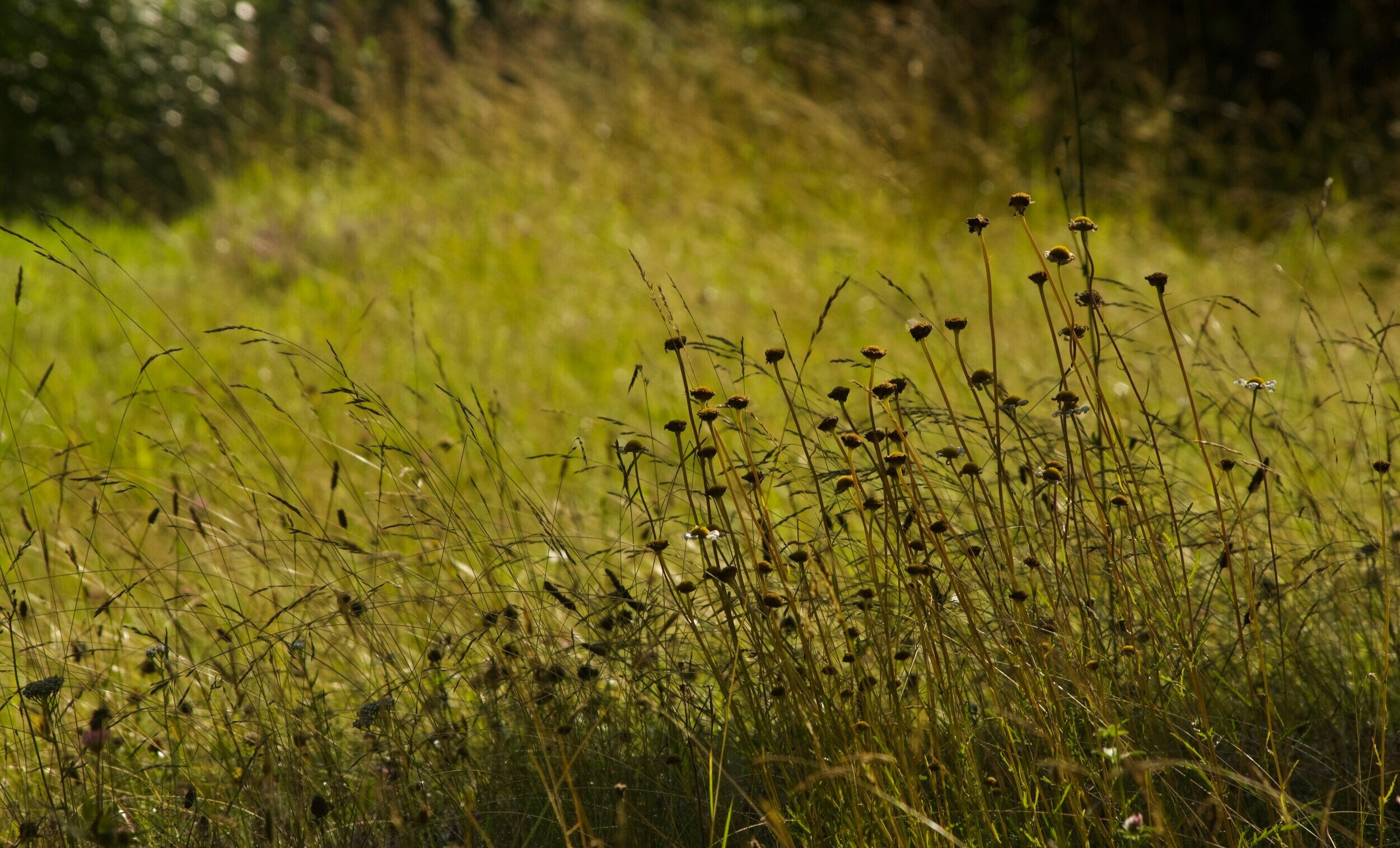
Why Wildlife Meadows?
We have chosen to surround our towns, neighborhoods, and homes with open spaces. Wildlife meadows and native grasslands offer a way to turn this space into habitat that will support living communities.
Context of meadows in New England
Except for the extensive disruption from agriculture and logging over the past several centuries New England has been a forested region for thousand years—and the majority of native animals and other wildlife here utilize forests during part if not all of their lives. To support our local wildlife we should first and foremost look to protect and expand our forests.
However—despite the extensive tree coverage—canopy gaps both temporary and permanent, forest clearings, and other open spaces are also a part of our historic landscape. These areas can be highly valuable wildlife habitat. Open habitats in New England were created and maintained both by weather events such as wind storms and flooding, as well as by the indigenous residents who used fire as a landscape management tool.
Why specify “wildlife meadows”?
We wouldn’t describe something as a “wildlife forest”, so why distinguish a place as a “wildlife meadow”?
The definition of a meadow is broad and effectively describes any open space covered in perennial vegetation with minimal growth of woody trees and shrubs. Hay fields, abandoned agricultural plots, pastures for grazing animals, wetlands, overgrown lawns, treeless alpine habitats—all these could fairly be called meadows, but they vary dramatically in their value for wildlife. The majority of our open meadowy spaces contain few native plants.
Part of the reason for this has to do with non-native plants and the dynamics of succession. Let’s say we allowed forest to reclaim an old field. The majority of trees—the most visible and foundational element of a forest community—that emerged would likely be native. This is not to say that our region’s forests aren’t compromised by and struggling with non-native, invasive plant species. But we are fortunate that the number of invasive canopy trees remains low (Norway maple being a big exception). This isn’t true with meadow and grassland habitats. If we were to allow an old agricultural field to fill in naturally with grasses and flowering perennials it’s likely after a few years that all the dominant species would be non-native.
We specify wildlife meadows because—while they are critical habitat—communities of native meadow and grassland plants are not the norm.
What makes a wildlife meadow?
Our local insects and animals rely on native plants. The most important component of a meadow that supports wildlife is the presence of native plants—both grasses and flowering perennials.
With a high percentage of native plants the next goal becomes plant diversity. No native perennial has higher wildlife value than goldenrod, but a meadow with nothing but goldenrod supports pollinators for only one part of the year. For insects that have specialized to consume or reproduce only one specific species of plant—like monarchs and milkweed—a meadow with only goldenrod may offer no suitable habitat at all. A diversity of flowers is important so that blooms are available throughout the year. A diversity of plant and leaf shapes is important for creating distinct micro-habitats and offering variable food sources.
With a practiced eye diverse meadows can be differentiated from low-diversity plots with just a quick glance, even when few things are in flower. The variation in texture, foliage elevation, and different shades of green reveal the bounty of unique growing strategies present among a group of plants with different life histories and niches. The flatness of a hay field, in comparison, is a dead giveaway to the lack of dynamism in its living community.
The joy of abundance
But why should you opt for a wildlife meadow? Our answer is entertainment, joy, and beauty. Native plant meadows in New England have historically supported not only unique species but been places that many primarily forest-dwelling animals come to feed and find mates. The myriad of insects and birds that utilize meadows make each summer day a dawn-to-dusk riot of vitality and abundance. We believe once you have experienced the rich tapestry of this region’s native plants growing untamed and unbound you will never go back to lawns.

Untamed Gardens serves the South Berkshire towns of:
Monterey
New Marlborough
Southfield
Mill River
Sandisfield
Otis
Sheffield
Great Barrington
Alford
Housatonic
Stockbridge
Lee
Norfolk, CT
Colebrook, CT
Reach out to schedule a consultation.
Whether you’re ready to dive in with a full design, or are just trying to figure out how you want to manage your landscape, I look forward to chatting.
